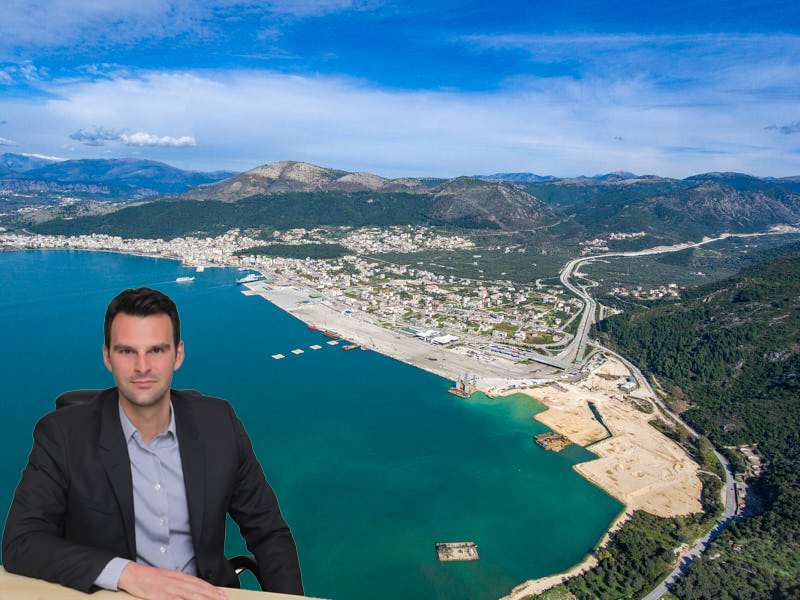Can you compare Igoumenitsa with a large European port and if so which one?
Igoumenitsa port serves significant passenger and cargo traffic volumes (transport by trucks or unaccompanied trailers) and is among the most important ports of the Adriatic Sea. We can currently compare our port with the ports of Ancona, Bari and Brindisi.
What are your goals for 2020? Do you have a short-term plan?
Our goal is to promote the port as a logistics hub, by developing all those infrastructures that can serve freight flows. Currently Phase C of the port construction works is under development and will serve freight flows.
Phase C brief description:
- Ra-Ra Pier (railway infrastructure) with a length of approximately 93.0 meters and a beneficial depth of -10.20m
- South quays along the southern coastline of Igoumenitsa bay with a total length of approximately 610.0 meters and a depth of -10.20m
- Gravity quay, approximately 21.0m long
- Land areas
Another important objective is the establishment of a Freight Village, in order to add another competitive advantage. The Freight Village will serve freight flows to and from Adriatic regions and will further enhance the viability and efficiency of each Maritime Corridor that either starts or passes through the port of Igoumenitsa. The improved intermodal route along the Adriatic-Ionian corridor will support the integration of Maritime Corridors into a complex supply chain between South-Eastern Europe (Greece, Albania, Bulgaria, North Macedonia, Turkey) and other Balkan countries (Croatia, Bosnia and Herzegovina, Serbia, Montenegro, Romania) as well as Central and Western Europe (Northern and Central Italy, Austria, Germany, Slovenia, France, Spain).
Igoumenitsa Port Authority should set high, ambitious, but at the same time realistic goals for its future identity, business outlook and operations.
- Promoting the port as the Western gateway to the Balkans,
- Establishing the port as an international homeport,
- Establishing the port as a cruise destination,
- Development of a Freight Village,
- Development of a marina network,
- Promoting Green Port facilities.
Greece’s role in the transport and logistics sector is formed by its significant strategic position in the international transport system and the needs of the internal market. Its strategic geographic position provides a gateway from West to East.
The port of Igoumenitsa is geographically Greece’s closest port to Italy and the Balkan countries of the Adriatic Sea, so it is a major connection for passengers and goods traffic, to and from Western Europe. Annually, 2.5 million passengers and about 250,000 trucks leave the port. The main ports connected directly with us are the Italian ports of Bari, Brindisi, Ancona, Venice, and Trieste, as well as Corfu Island.
The port of Igoumenitsa is the main gateway to Northern and Central Greece for the transportation of passengers and cargo to and from EU countries through Italy.




